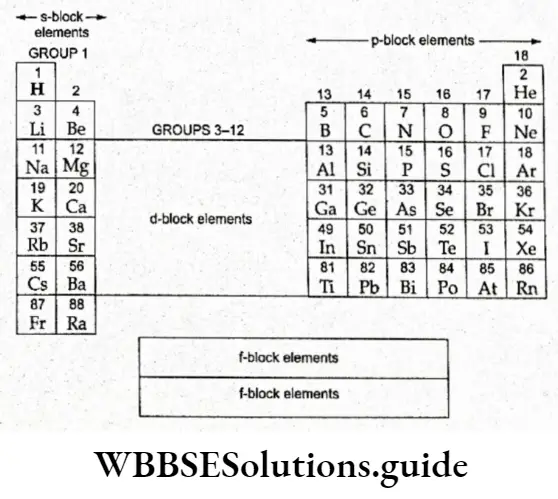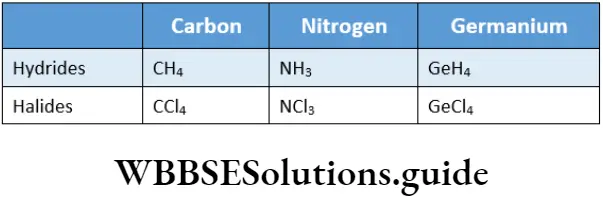Hydrogen
Hydrogen Is The Lightest And The Simplest Atom Known In The Family Of Chemical Elements.
It Was Discovered By The English Chemist Henry Cavendish In 1766. Although On Earth Hydrogen In Combined Form Is The Ninth Most Abundant Element, It Is The Most Abundant Element In The Universe.
Some Of The Planets Appear To Have Significant Amounts Of It Including The Atmospheres Of Jupiter, Saturn And Uranus.
Collected By Gravitational Forces In Stars, Hydrogen Is Converted Into Helium By Nuclear Fusion.
This Process Leads To The Release Of Enormous Energy, Which Is Supplied To Stars Including The Sun.
Being a light gas, hydrogen continually escapes into space and is, therefore, found in low concentration in the Earth’s atmosphere. In 1781, Cavendish confirmed that water was produced by the burning of hydrogen.
This led the French chemist Antoine Lavoisier to coin the name ‘hydrogen’ (Greek: maker of water). The two heavier isotopes of hydrogen—deuterium and tritium—were discovered in 1931 and 1935, respectively.
The nuclear fusion of each of these isotopes occurs at a very high temperature and gives an enormous amount of energy. The hydrogen bomb makes use of this phenomenon.

Hydrogen Position In The Periodic Table
The atomic mass of hydrogen is 1.0079 u and the atomic number is 1. It has the simplest electronic configuration (Is¹), resembling those of alkali metals, which have one electron in their outermost orbits.
Alkali metals tend to lose the outermost electron and form univalent positive ions. Hydrogen can also lose an electron to form H+.
Therefore, hydrogen can be placed above alkali metals in Group 1 of the periodic table.
On the other hand, a closer look at the electronic configuration of hydrogen shows that it has one electron less than helium (Is²), a noble gas, and resembles halogens (F, Cl, Br, I), which too have one electron less in their outermost shells than their nearest noble gases.
Halogens gain an electron to form univalent negative ions. H- ions are rarely formed, and a hydrogen atom gains an electron from highly electropositive metals only.
On the basis of its unique properties, hydrogen can be placed either in Group 1 (along with the alkali metals) or in Group 17 (along with halogens).
Conventionally, hydrogen is said to be the first member of Group 1 of the periodic table. According to many, however, hydrogen should be treated as a group in itself.
In the present form of the periodic table hydrogen along with helium is placed in the first period.
Hydrogen shows similarities in chemical behaviour with alkali metals as well as halogens. However, it also differs from them in many ways.
Let us now compare hydrogen with alkali metals and halogens in greater detail.

Hydrogen Comparison With Alkali Metals Similarities
1. Electronic configuration As already stated, the hydrogen atom has one electron in its only s orbital, and alkali metals have only one electron in their outermost orbital.
- H Is¹
- Li 1S²2S¹
- Na lS²2s²2p3s¹
2. Electropositive character Hydrogen as well as alkali metals are electropositive.
They lose one electron to form the corresponding ion. Alkali metals are more electropositive than hydrogen. The hydrogen ion exists only in a discharge tube but not in solution.
In an aqueous solution, H+ combines with water and is represented as H+ (aq). For example, when hydrogen chloride is dissolved in water, it produces hydronium ions (H3O+).
The electropositive nature of hydrogen and alkali metals is also reflected by the fact that during the electrolysis of their salts, both are liberated at the cathode.
⇒ \(2 \mathrm{NaCl} \stackrel{\text { electrolyals }}{\longrightarrow} \frac{\text { At cathode }}{2 \mathrm{Na}}+\frac{\text { At anode }}{\mathrm{Cl}_2}\)
⇒ \(2 \mathrm{HCl} \stackrel{\text { electrolygis }}{\longrightarrow} \mathrm{H}_2+\mathrm{Cl}_2\)
3. Reducing nature Like alkali metals, hydrogen acts as a strong reducing agent.
⇒ \(\begin{aligned}
2 \mathrm{H}_2+\mathrm{O}_2 & \longrightarrow 2 \mathrm{H}_2 \mathrm{O} \\
2 \mathrm{Na}+2 \mathrm{H}_2 \mathrm{O} & \longrightarrow 2 \mathrm{NaOH}+\mathrm{H}_2
\end{aligned}\)
4. Oxidation state Alkali metals as well as hydrogen show an oxidation state of +1 in their compounds, e.g., hydrogen chloride (H+C1-) and sodium chloride (Na+Cl-).
Hydrogen also shows an oxidation state of 1 in hydrides.
5. Combination with nonmetals Hydrogen and alkali metals readily form compounds with nonmetals like oxygen, sulphur and halogens.
Differences
- Ionisation enthalpy The ionisation enthalpy of hydrogen (1312 kJ Mol-1) is much higher than the ionisation enthalpies of alkali metals, e.g., Li =520 kJ Mol-1 and Cs = 375.6 kJ Mol-1. This implies that hydrogen has less tendency to form positive ions than alkali metals do.
- Halides Hydrogen halides and alkali-metal halides differ in character. For instance, HC1 is a covalent compound and NaCl is ionic; HC1 is gaseous and NaCl is a solid at room temperature.
- Nonmetallic character Hydrogen is a nonmetal whereas all the Group1 elements are metals.
- Atomicity The hydrogen molecule exists as H2, i.e., it is diatomic. In contrast, alkali metals are monoatomic. Atomic hydrogen exists only at high temperatures.
- Oxides Alkali-metal oxides, e.g., Li;0 and K20, are basic while the oxide of hydrogen—HzO—is neutral.
- Ionic size H+ ions (~ L5 x 10_3pm) are much smaller than alkali-metal ions (50-220 pm).
Hydrogen Comparison With Halogens Similarities
- Electronic configuration Halogens have seven electrons in their outermost shells, one electron less than the stable configuration of the nearest noble gas. Having one electron in its outermost shell, hydrogen is one electron short of the stable configuration of the corresponding noble gas (helium)
- H(ls¹)
- F(ls² 2s² 2p5)
- Cl(ls² 2s²2ph 3s² 3p5)
- Hc(ls²)
- Ne(ls² 2s² 2pf )
- Ar(ls² 2s² 2p6 3s² 3p6)
- Atomicity Hydrogen as well as halogens exist as diatomic molecules (H2, CI2, F2, llr2, etc.),
- Nonmetallic character Hydrogen as well as halogens arc nonmetals.
- Formation of covalent compounds Hydrogen as well as halogens combine with nonmetals like carbon, and nitrogen and metalloids like germanium to form covalent compounds.
- Ionisation enthalpy The ionisation enthalpies of hydrogen (1312 kJ Mol-1) and halogens are comparable. Chlorine, for instance, has an ionisation enthalpy of 1255 kJ Mol-1.
- Electronegative nature Halogens readily gain one electron to form a halide ion. Hydrogen gains one electron to form a hydride ion (H-) only with a few extremely electropositive metals, e.g., LiH and CaH2.

Differences
- Nature of Oxides The oxide of hydrogen (HzO) is neutral, whereas some oxides of halogens, e.g., HI03, are acidic.
- Absence of unshared electrons The hydrogen molecule has no unshared pairs of electrons while halogen molecules have six such pairs.
Degree of electronegativity Hydrogen is less electronegative than halogens. This is borne out by the fact that halogens form compounds with several metals while hydrogen docs so with very few highly electropositive metals such as sodium, lithium and calcium.
⇒ \(\mathrm{H}: \mathrm{H} \quad \text { : } \ddot{\mathrm{F}}-\ddot{\mathrm{F}}:\)
Hydrogen Occurrence
Hydrogen constitutes about 92% of the universe. However, its abundance in the earth’s atmosphere is very low. This is because the earth’s gravitational field is not strong enough to hold such a light element.
Some H2, however, is found in volcanic gases. It occurs in water, organic compounds, fossil fuels (like coal, petroleum and natural gas), clay, ammonia and acids.
All animal and vegetable matter also contains hydrogen. In fact, hydrogen forms more compounds than any other element.
Although it is often said that there are more known compounds of carbon than of any other element, the fact is that almost all carbon compounds contain hydrogen.
Hydrogen Multiple-Choice Questions
Question 1. At 925 K, palladium adsorb
- 50 volumes of hydrogen
- 100 volumes of hydrogen
- 800 volumes of hydrogen
- 1000 volumes of hydrogen
Answer: 3. 800 volumes of hydrogen
Question 2. Interstitial hydrides are obtained using
- Elements Of The D Block
- Actinide elements of the f block
- lanthanide elements in the f block
- Ca++, Na+ and K+
Answer: 1. Elements Of The D Block
Question 3. In the reaction the product obtained is
- Nascent Hydrogen
- Atomic hydrogen
- Ortho hydrogen
- Para hydrogen
Answer: 2. Atomic hydrogen
Question 4. Which of the following reactions is explosive in sunlight?
- \(\mathrm{N}_2+3 \mathrm{H}_2 \longrightarrow 2 \mathrm{NH}_3\)
- \(\mathrm{S}+\mathrm{O}_2 \longrightarrow \mathrm{SO}_2\)
- \(\mathrm{H}_2+\mathrm{Cl}_2 \longrightarrow 2 \mathrm{HCl}\)
- \(\mathrm{Na}+\mathrm{H}_2 \mathrm{O} \longrightarrow \mathrm{NaOH}+\mathrm{H}_2[latex]\)
Answer: 3. \(\mathrm{H}_2+\mathrm{Cl}_2 \longrightarrow 2 \mathrm{HCl}\)
Question 5. Deionised water can be obtained by
- Distillation
- The Calgon Process
- The Permutit Process
- The ion-exchange method
Answer: 1. Distillation
Question 6. In which of the following reactions does hydrogen form compounds by gaining electrons?
- \(2 \mathrm{Na}+\mathrm{H}_2 \longrightarrow 2 \mathrm{NaH}\)
- \(\mathrm{CuO}+\mathrm{H}_2 \longrightarrow \mathrm{Cu}+\mathrm{H}_2 \mathrm{O}\)
- \(\mathrm{H}_2+\mathrm{Cl}_2 \stackrel{\text { darkness }}{\longrightarrow} 2 \mathrm{H}-\mathrm{Cl}\)
- \(\mathrm{H}_2+\mathrm{F}_2 \underset{\text { light }}{\stackrel{\text { diffused }}{\longrightarrow}} 2 \mathrm{H}-\mathrm{F}\)
Answer: 1. \(2 \mathrm{Na}+\mathrm{H}_2 \longrightarrow 2 \mathrm{NaH}\)
Question 7. Hydrogen gas does not reduce heat
- A12O3
- CuO
- SnO2
- Fe2O3
Answer: 4. Fe2O3
Question 8. Which of the following is used as a moderator in nuclear reactions?
- Heavy water
- Hard water
- Deionised water
- Soft water
Answer: 1. Heavy water
Question 9. In H2O2 the O—O—H bond angle is
- 94.8º
- 106º
- 109º 28′
- 111º
Answer: 1. 94.8º
Question 10. Which of the following metals does not liberate hydrogen by reacting with dilute HC1?
- Cu
- Fe
- Zn
- Mg
Answer: 1. Cu
Question 11. The decomposition of H2O2 is prevented by
- Urea
- Acetanilide
- Oxalic Acid
- KOH
Answer: 1. Urea
Question 12. Usually, hydrogen combines with other elements by
- Gaining an electron
- Sharing an electron
- Losing an electron
- None of these
Answer: 2. Sharing an electron
Question 13. The permanent hardness of water is not removed by boiling because
- It is caused due to the bicarbonates of calcium and magnesium
- It is caused due to the sulphates of calcium and magnesium
- It cannot drive away SO2-4
- It cannot drive away CO2
Answer: 2. It is caused due to the sulphates of calcium and magnesium
Question 14. H2O2 has a higher boiling point than water because it
- Is More Dense Than Water
- Has A Higher Dielectric Constant Than That Of Water
- Is More Hydrogen Bonded Than Is Water
- None Of These
Answer: 3. Is More Hydrogen Bonded Than Is Water
Question 15. Which of the following statement(s) is/are correct?
- Both hydrogen and halogens have the tendency to accept electrons.
- Hydrogen and halogens form hydrides and halide ions respectively with equal ease.
- Both hydrogen and halogens combine with nonmetals to form covalent compounds.
- Both hydrogen and halogens are very reactive.
Answer: 3. Both hydrogen and halogens combine with nonmetals to form covalent compounds.
Question 16. The exhausted permit is generally regenerated by percolating through it a solution of
- Polyphosphates
- Calcium Chloride
- Aluminium Oxide
- Polyphosphates
Answer: 3. Aluminium Oxide
Question 17. Hydrogen(c) sodium is chloride-commercially prepared from 4
- Water Gas
- Natural Gas
- Coal Gas
- Producer Gas
Answer: 1. Water Gas
Question 18. The oxide that gives hydrogen peroxide on treatment with a dilute acid is
- PbO2
- MnO2
- BaO2
- TiO2
Answer: 3. BaO2
Question 19. The aggregates of water molecules, in the liquid state, are held due to
- Intermolecular hydrogen bonds
- Van der waals forces
- Intramolecular hydrogen bonds
- Intermolecular hydrogen bonds
- Covalent bonds
Answer: 1. Intermolecular hydrogen bonds
Question 20. Which among the following is an electron-deficient covalent hydride?
- CH4
- NH3
- B2H6
- H2O
Answer: 3. B2H6

